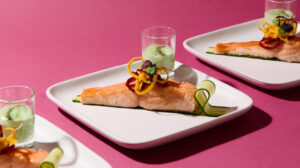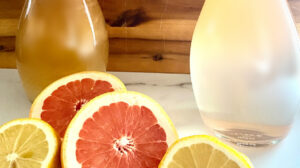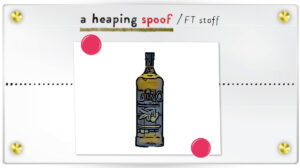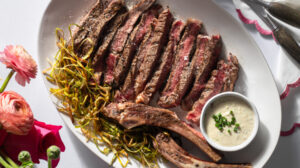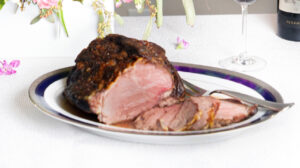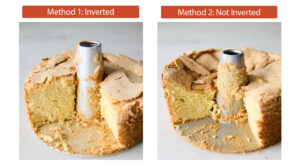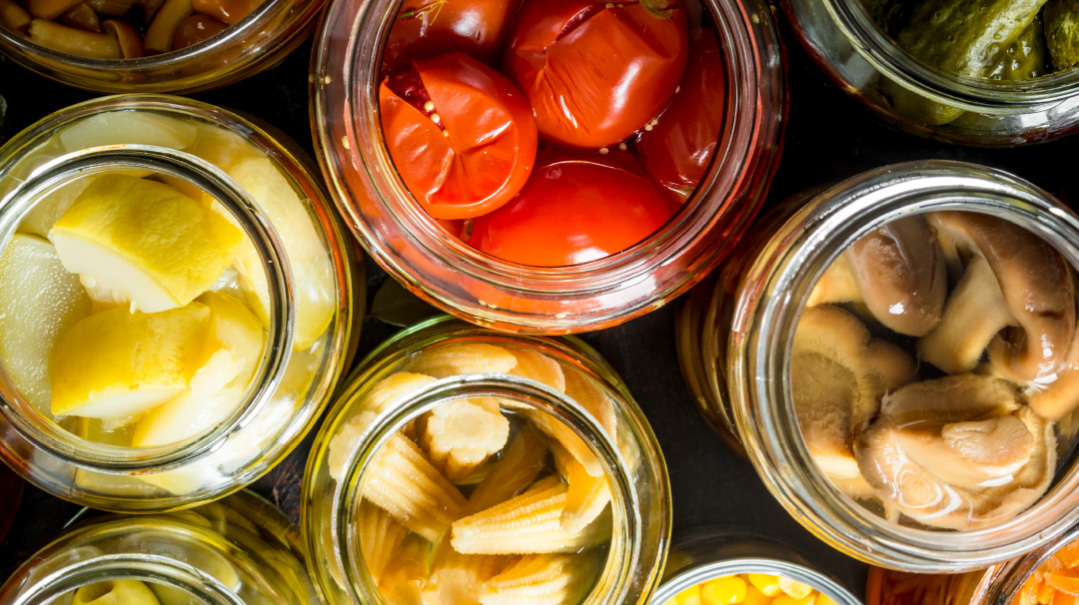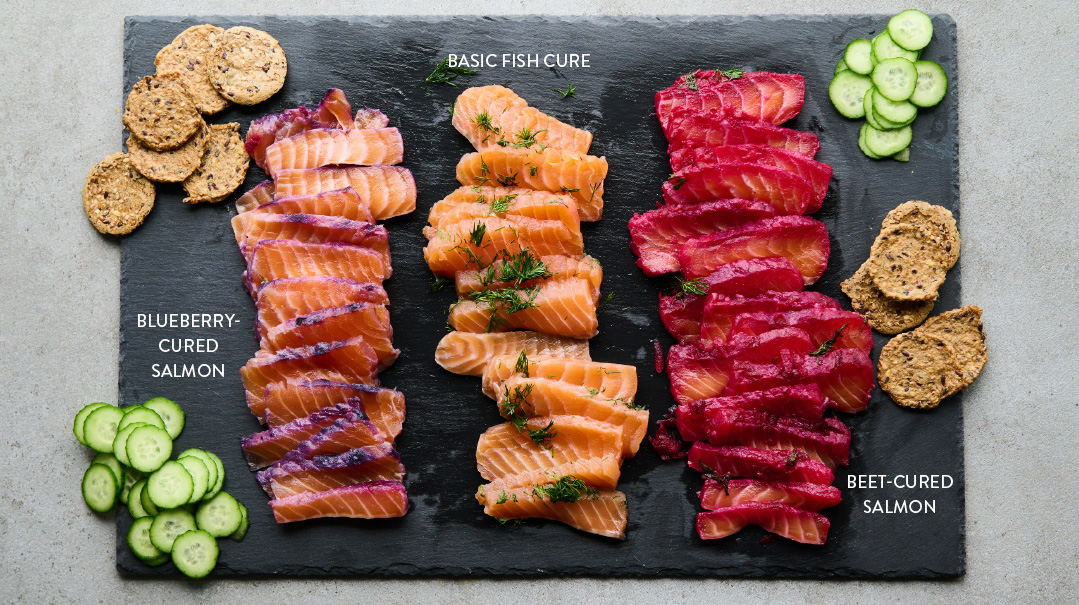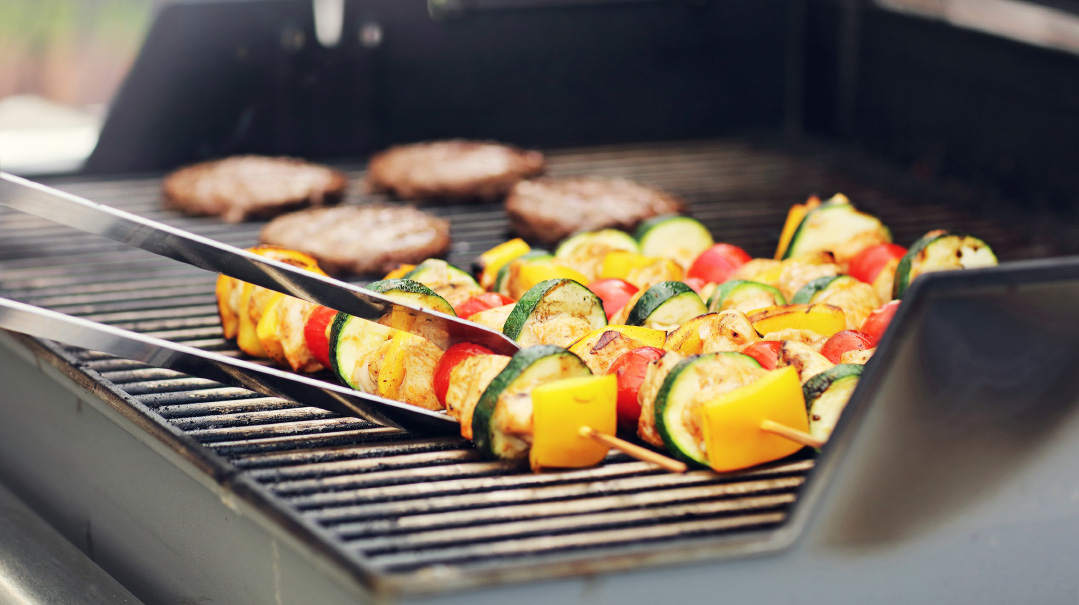Salts of the Earth
| August 12, 2020How various culinary salts interact with your food and your body
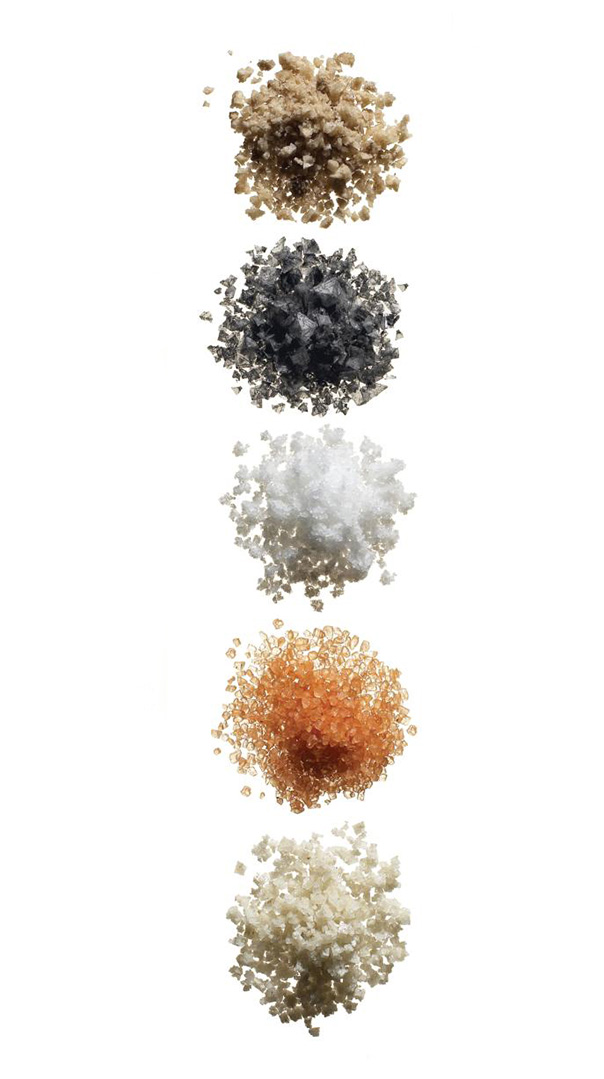
In my home, we cook most foods with little or no salt, and look for products that have the lowest sodium content. I get nagged about my avoidance of salt by my foodie friends, and I tell them that at any age people should limit their sodium intake to keep their bodies healthy
What’s so bad about salt? they ask. Salt makes our bodies retain water, I say, which puts an extra load on our hearts and cell walls, can raise blood pressure and lead to heart attacks, strokes, and other serious health issues. Right, they say, so when we’re diagnosed with high blood pressure, we’ll limit the salt. Why should we change now?
This article is my response, and I’m making the convo public. I’ll start with the origins of salt, move briefly through the health pros and cons, and introduce you to some cool gourmet salts and how to use them.
Where It Comes From
Salt comes from salt mines or evaporated sea water, and is made up of two main minerals — sodium and chloride. Sea salts and colored salts contain extra minerals not found in table salt, such as potassium, magnesium, and calcium, but in trace amounts that don’t add up to much nutritionally. Salt helps to bring out the flavor in food, acts as a binder and stabilizer, and preserves freshness. Our bodies also require sodium to control nerve impulses, use our muscles, and maintain proper water and mineral balance.
All produce naturally contains sodium, especially vegetables — cooked spinach and chard contain about 300 mg of sodium; there’s roughly 65 mg per medium beet (golden or red); and celery and carrots have 50 mg per serving. Fruits have very low levels of naturally occurring sodium. The processed foods that make up much of the typical American diet, on the other hand, contain massive amounts of salt, leaving us with very little salt budget when cooking. People who eat “clean” — using fresh, whole ingredients and avoiding processed foods — can use salt sparingly without health risks.
Salt Checkup
So how do you know where you fall on salt use? Do an inventory of the foods you eat regularly, including both raw ingredients and fully prepared foods — marinara, canned foods, cereals, snacks, consommés — and add up the sodium per serving. The CDC recommends sticking to less than 2,300 mg a day; Harvard School of Public Health says we only need 500 mg a day to function well, with a healthy maximum of 1,500 mg.
If your total is between these numbers, you can add a little salt to your dishes. If not, you may want to cut out some of those high-salt ingredients and foods completely, or look for low-sodium replacements (see sidebar for practical tips). On a personal note, I’ve been amazed at how quickly we can lower our salt tolerance and be able to taste and appreciate the natural flavor of different foods and spices.
A note of caution: For those who think they can wait until they get older to minimize their salt intake, by the time a person reaches a point of high blood pressure, medication will likely be required to keep the pressure down, in addition to a salt-free diet. Making changes now can prevent that and keep a person healthier during their prime and later years. Sticking to a low-sodium diet with lots of unprocessed vegetables, fruits, and whole grains gives you a greater chance at a healthy, long life.
Spiritual Salt
All health cautions aside, it’s clear that salt has a strong role in kosher food and Jewish customs. Each time we wash for bread, we are instructed to dip the bread in salt before making a brachah, and the process of kashering meat involves heavy salting. When the Torah discusses salting the korbanos, salt is mentioned three times in the course of a single pasuk. In researching salt vis-à-vis korbanos, I found some beautiful explanations.
Mitzvos can be compared to two types of food — bland or spiced. We can certainly eat all of our food with no spices and still be nourished, but that diminishes our pleasure and joy, and Hashem wants us to experience both. The same thing is true with mitzvos. We can observe them by rote, strictly by the book, and satisfy the basic requirements. But when we add personal kavanah or emotions, or enhance mitzvos in special ways, we are giving Hashem more joy. This explains the strong emphasis on salt. My takeaway? Sprinkle salt sparingly, spices and kavanah generously. May we all merit to salt our bread and our korbanos in Yerushalayim in the coming year!
How to Cut Back on Sodium and Keep the Flavor Strong
- Switch from canned to frozen fruit and vegetables. Canned varieties typically add ingredients (salt, sugar, preservatives) that simply aren’t needed when food is flash-frozen.
- Stock up on a few varieties of salt-free spice blends. You’ll be more likely to reach for these instead of salt when they’re handy, and they’re great in soups, stir-fries, omelets, and meat and chicken dishes. I’ve tried store brand and name brand, and both are equally and amazingly delicious. (Author’s son’s note: Tell the oilam how good these spice mixtures are. Author’s note: Check.)
- Grow some countertop or garden herbs for a great finish to soups, stews, and other dishes. My favorite is scallion roots, which can be placed in dirt or water and will regrow within days, giving you an endless supply of this tasty allium.
- Replace the saltshaker on your table with garlic or onion powder shakers — or a salt-free blend like Mrs. Dash. (But, of course, keep the saltshaker handy for when you wash on bread.)
- Use natural flavorings that pack a punch, such as grated ginger, fresh garlic, sliced shallots or onions, and citrus zest. Toasted nuts and nut butters, raw tahini, unsalted whole-ground mustard, vinegars, and other flavorful and healthful foods are also great ways to add incredible depth of flavor, especially in dressings and sauces.
Toasted nuts and nut butters, raw tahini, unsalted whole-ground mustard, vinegars, and other flavorful and healthful foods are also great ways to add incredible depth of flavor, especially in dressings and sauces.
Gourmet Salts and Their Uses
Kosher Salt: Considered one of the best overall salts and the one to choose if you only want one type, kosher salt is iodine free, comes in coarse or fine varieties, and dissolves easily. Use in meat and poultry rubs, and pots of water when cooking soup or pasta.
Iodized Table Salt: Table salt is inexpensive, finely ground, and typically contains added iodine. It’s highly processed and retains no minerals. Anti-caking agents are added that can leave a somewhat bitter or metallic taste, so this type of salt is not highly regarded by gourmets. Use in baking — in tiny amounts and in a sweet recipe, any bitterness won’t be noticed.
Sea Salt: Considered a lighter, less potent salt — but depth of saltiness varies depending on where it’s harvested. Mineral content varies, as does potential impurities, such as traces of heavy lead or plastic toxins from ocean pollution. Use with sweet or savory recipes; fi ne sea salt distributes evenly, avoiding the danger of unevenly salted food.
Pink Himalayan Salt: Harvested in India or Pakistan at the Himalayan Mountains, this pretty pink rock salt is considered one of the purest salts, and is used for fl avoring, as well as cooking. Look for signs that the company uses pure ingredients, as many cheaper manufacturers will add color to replace lost minerals. Use as a fi nishing salt for visual interest, for cooking or baking, and in homemade electrolyte drinks.
Fleur de Sel: This French term means “flower of salt,” and refers specifically to sea salt from the coast of Brittany. A moist somewhat sticky salt that is said to smell and taste sea-like. Use as a finishing salt, due to its long-lasting effect on the taste buds.
Smoked Salt: This salt is cold-smoked with different types of wood for a variety of flavor profiles. Use in smoky dishes, sauces, or barbecue foods.
Flake Salt: A sea salt with bright, bold taste, and an irregular, flaky shape. Use with salty/sweet combos, like salted caramel ice cream, for a bold impact.
Celtic Sea Salt: Harvested o the coast of France, this has a grayish color and is slightly moist or sticky. Has lower sodium levels compared to other salts, and higher traces of potassium and calcium (.16–.17%), and magnesium (.3%). Use as a finishing salt on roasted or grilled vegetables or meats.
Red and Black Hawaiian Sea Salt: Red Hawaiian is a sea salt mixed with volcanic soil (rich in iron and oxide) for bright color and rich nutrients, and a somewhat nutty flavor. Black Hawaiian has added activated charcoal, giving it an intense, earthy flavor. Use as a finishing salt on fish, salads, or vegetables for visual and taste appeal.
(Originally featured in Family Table, Issue 705)
Oops! We could not locate your form.

